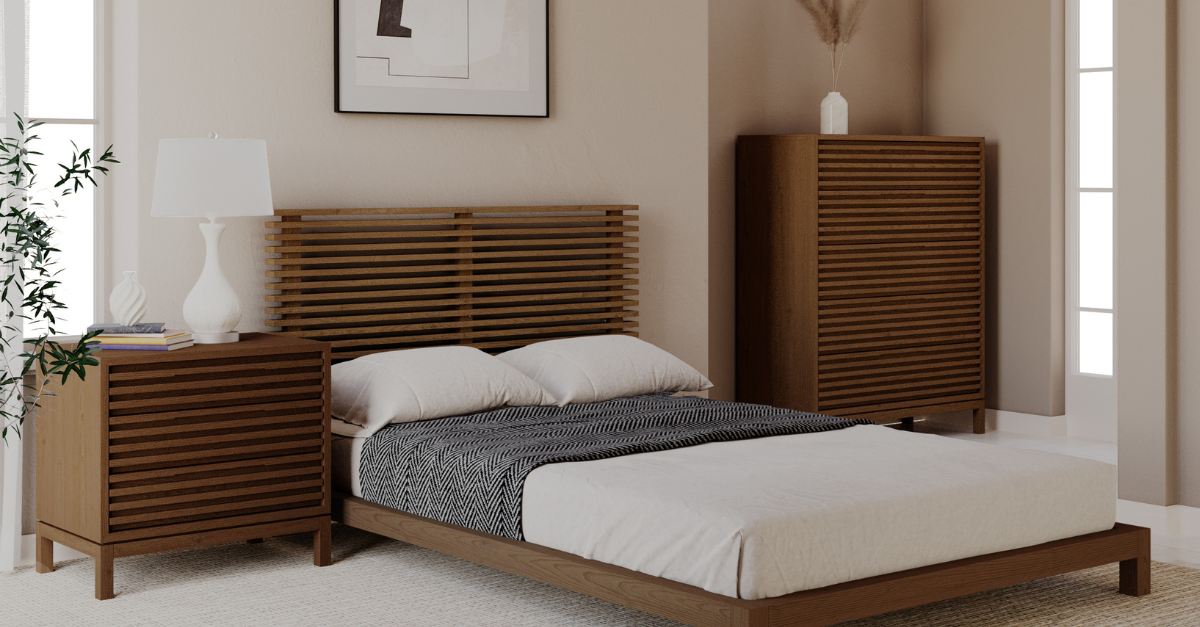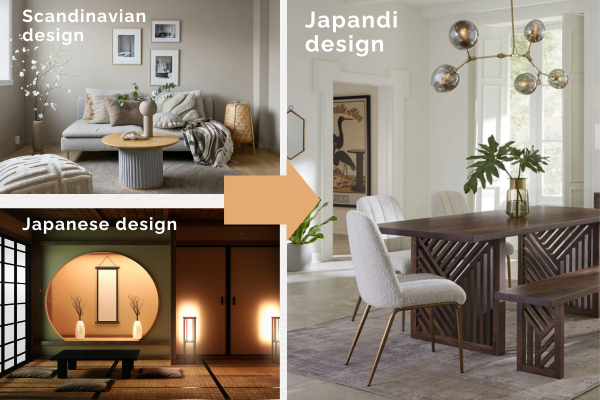Stone furniture combines the authenticity of nature with timeless design – each piece is unique and...
Japandi Decor: calm and harmonious design

Discover the harmonious mix of Japanese aesthetics and Scandinavian coziness that will transform your home into an oasis of calm.
Why the Japandi look is popular in modern interior design
The Japandi style is becoming increasingly popular in modern interior design as it combines the best elements of two cultures: the timeless elegance of Japan and the welcoming warmth of Scandinavia. This combination creates a harmonious yet functional ambience that has a calming effect on the occupants.
At a time when the home is more than ever a personal retreat, the Japandi style offers the ideal balance between aesthetic beauty and practical comfort. The clarity and simplicity of the design not only promote visual calm, but also help to relax the mind and create a stress-free environment.
Advantages of the Japandi style:
- Minimalism: pared-down design for greater tranquillity.
- Functionality: Practical and aesthetic furniture.
- Timelessness: Design that never goes out of fashion.
- Mindfulness: Focus on quality rather than quantity.
Japandi Living: an introduction to the perfect symbiosis
The Japandi style combines the clarity of Japanese design with the coziness of Scandinavian style.- Scandinavian: Light, friendly rooms with warm wood tones and cozy textiles. The Scandinavian style focuses on functionality and inviting, cozy furnishings.
- Japanese: Focus on minimalist aesthetics, clean lines and Zen-inspired tranquillity. Materials such as dark wood and natural stone create a calming, meditative atmosphere.

These two designs unite perfectly because they share similar values: Functionality, sustainable materials and timeless beauty. The Japandi style thus creates a balanced mix of clear aesthetics and practical coziness. The result is a space that is not only calming and stress-free, but also offers a warm, inviting atmosphere - a place where you can enjoy spending time and relax.
Colors in the Japandi interior
The color palette in the Japandi design focuses on neutral, natural tones such as grey, brown, beige and cream. These soothing colors create a harmonious atmosphere and promote balance, visually calming the room and reducing everyday stress.
Complemented by subtle accents in pastel shades or earthy colors such as terracotta or olive, they bring warmth and depth to the room. These colors support the natural, calming effect of the Japandi style and create a cozy, inviting environment.

Materials in the Japandi interior
Natural materials are at the heart of the Japandi style and help to create a warm, calming atmosphere. Important materials are:
- Wood: Gives the room natural warmth and timeless elegance.
- Bamboo: A sustainable material that radiates lightness and closeness to nature.
- Linen: For soft, airy textures that make the room inviting.
- Ceramic: Adds a handcrafted, textured dimension to the design.
The interplay of wood, bamboo, linen and ceramic in the Japandi style creates a balanced atmosphere of calm and naturalness. Wood and bamboo bring a warm, earthy foundation, while linen and ceramic add subtle, soft textures that make the space feel inviting and harmonious.
Metallic accents such as brass or black steel add modern highlights that give the room structure and depth without disturbing the calm aesthetic. They complement the minimalist Japandi style with a contemporary touch and ensure a balanced interplay of naturalness and modern design. These durable and easy-care materials also make the Japandi style functional and sustainable.
Japandi home: less is more
Japandi style decoration is minimalist and functional. Instead of lots of accessories, you will find selectively placed individual pieces such as simple ceramic vases, handmade wooden bowls or simple sculptures that enhance the room without cluttering it.
Plants are also important and bring freshness to the room - succulent plants or green houseplants in simple clay or concrete pots are ideal.
Artwork and textiles are discreet and harmonious, such as monochrome prints in wooden frames or linen curtains in neutral colors. Handmade objects, such as homemade pots or woven rugs, give the room a personal touch and underline the authentic, sustainable character of the Japandi style.

Example of Japandi Living: Tanner and Sunrise collections from Modus Furniture
Both collections ideally combine the calming simplicity of Japanese design with the inviting warmth of Scandinavian style.
- Solid ash wood: Promotes natural warmth, a central element in the Japandi style.
- Minimalist form: Clean lines and simple design reflect Scandinavian simplicity.
- Earthy tones: Roux and Flaxen support the calm, neutral color palette of the Japandi style.
Sunrise collection:
- Natural wood finishes: Warm, rich brown tones match the Japandi focus on natural materials.
- Transparent surfaces: Simple but modern accents of black and white complement the minimalist look.
- Versatility: The combination of wood and clear accents creates a calm but profound atmosphere.
Conclusion
The Japandi style is a perfect symbiosis of Scandinavian simplicity and Japanese Zen aesthetics, which is becoming increasingly popular in modern interior design. It offers a harmonious, functional atmosphere that is both calming and inviting. The focus on natural materials, minimalist shapes and timeless beauty creates a space that promotes both visual and emotional balance.
The Tanner collection is an excellent example of how this style can be integrated into modern interiors - with a clean design, high-quality materials and sustainable functions. Bring the Japandi look into your home and enjoy an environment of calm and harmony.









.png?height=200&name=Blog%20Bilder%20Modus%20(6).png)
